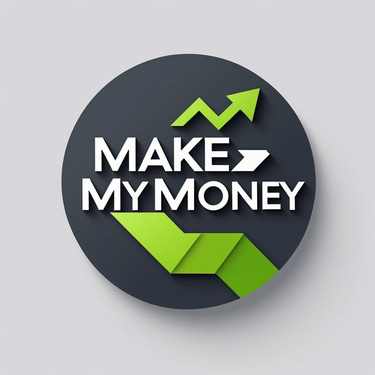7 Passive Income Ideas That Actually Work in 2025
Discover 7 proven passive income ideas for 2025 with step-by-step guides! From dividend stocks to YouTube automation, learn how to earn money effortlessly.
WEALTH


7 Passive Income Ideas That Actually Work in 2025
In today’s fast-paced economy, earning passive income has become a top priority for many Americans. Whether you're looking to supplement your salary, achieve financial freedom, or retire early, passive income streams can help you generate money with minimal ongoing effort.
But with so many options available, which ones actually work in 2025? In this guide, we’ll explore seven proven passive income ideas, backed by real-world examples and actionable steps to get started.
1. Investing in Dividend Stocks.
How It Works:
Dividend stocks are shares of publicly traded companies that distribute a portion of their profits to shareholders in the form of dividends. These payments are typically made quarterly, but some companies pay monthly.
Dividend Yield: This is the annual dividend payment divided by the stock price (e.g., a $100 stock paying $4/year has a 4% yield).
Dividend Aristocrats: Companies like Johnson & Johnson (JNJ) and 3M (MMM) have increased dividends for 25+ consecutive years, making them reliable choices.
DRIP (Dividend Reinvestment Plan): Automatically reinvest dividends to buy more shares, accelerating compound growth.
Example:
Meet Sarah, a 35-year-old marketing professional. She invested $20,000 in dividend-paying stocks like Coca-Cola (KO) and Procter & Gamble (PG), which yield around 3-4% annually. Now, she earns $600-$800 per year without lifting a finger.
How to Start:
Open a Brokerage Account – Use platforms like Fidelity, Charles Schwab, or Robinhood.
Research Stocks/ETFs – Look for high-yield, stable companies (e.g., VYM, SCHD).
Diversify – Avoid putting all funds into one stock; spread across sectors (healthcare, tech, utilities).
Set Up Automatic Reinvestment – Enable DRIP for compounding.
Monitor & Adjust – Check earnings reports and adjust holdings if needed.
Pros & Cons:
✅ Low effort once invested
✅ Potential for long-term growth
❌ Market volatility can affect returns
2. Rental Income (Traditional & Airbnb).
How It Works:
Traditional Rentals: Long-term tenants pay fixed monthly rent.
Short-Term Rentals (Airbnb/VRBO): Higher nightly rates but require more management.
REITs (Real Estate Investment Trusts): If you don’t want to own property, invest in REITs like O (Realty Income Corp), which pays monthly dividends.
Example:
John and Lisa bought a duplex in Austin, Texas. They live in one unit and rent the other for $1,500/month, covering their mortgage. They also list a spare room on Airbnb, earning an extra $1,200/month.
How to Start:
Option 1: Buy a Rental Property
Get Financing – Use a mortgage or cash.
Find a Property – Use Zillow, Redfin, or Roofstock for turnkey rentals.
Screen Tenants – Run credit checks via TransUnion SmartMove.
Hire a Property Manager (10% fee) – For truly passive income.
Option 2: Airbnb Arbitrage
Rent a Property – Negotiate a long-term lease.
Furnish & List on Airbnb – Use dynamic pricing tools like PriceLabs.
Automate – Hire a cleaner and use smart locks for self-check-in.
Pros & Cons:
✅ High earning potential
✅ Appreciation in property value
❌ Requires upfront capital and maintenance
3. Creating & Selling Digital Products.
How It Works:
E-books: Write once, sell forever (e.g., Kindle Direct Publishing).
Online Courses: Platforms like Udemy & Teachable handle hosting.
Printables/Designs: Sell on Etsy (e.g., wedding planners, resume templates).
Example:
Emily, a fitness coach, created a $29 workout plan PDF on Etsy. She earns $3,000/month passively from sales.
How to Start:
Choose a Niche – Fitness, finance, productivity.
Create the Product – Use Canva (for designs), Google Docs (for e-books).
Set Up a Store – Use Payhip, Gumroad, or Etsy.
Drive Traffic – Promote via Pinterest SEO & YouTube tutorials.
Pros & Cons:
✅ Scalable with zero inventory
✅ High profit margins
❌ Requires initial effort to create
4. Peer-to-Peer (P2P) Lending.
How It Works:
You act as the bank, lending money to borrowers at 6-12% interest.
Platforms: Prosper, LendingClub, Funding Circle.
Risk Levels: Higher interest = higher default risk.
Example:
Mike invested $10,000 across 200 loans on Prosper, earning 8-10% annually ($800-$1,000/year).
How to Start:
Sign Up on a P2P Platform – Start with LendingClub.
Deposit Funds – Minimum $1,000 recommended.
Diversify Loans – Spread across 100+ loans to minimize risk.
Reinvest Earnings – Compound returns over time.
Pros & Cons:
✅ Higher returns than savings accounts
✅ Passive once set up
❌ Risk of borrower defaults
5. Affiliate Marketing.
How It Works:
Promote products via blogs, YouTube, or social media.
Earn 5-50% commission per sale (Amazon: 1-10%).
Example:
David, a tech blogger, reviews gadgets and includes Amazon affiliate links. He earns $5,000/month passively.
How to Start:
Pick a Niche – Tech, finance, beauty.
Join Affiliate Programs – Amazon Associates, ShareASale.
Create Content – Blog posts, YouTube reviews.
Drive Traffic – SEO, Pinterest, TikTok.
Pros & Cons:
✅ No need for inventory
✅ Unlimited earning potential
❌ Requires content creation & traffic
6. High-Yield Savings Accounts & CDs.
How It Works:
Savings Accounts: 4-5% APY (Ally, Marcus).
CDs (Certificates of Deposit): Lock in rates for 3 months to 5 years.
Example:
Jessica parked $50,000 in a 5% APY CD, earning $2,500/year risk-free.
How to Start:
Compare Rates – Use Bankrate.com.
Open an Account – No fees, FDIC-insured.
Deposit Funds – Let interest compound.
Pros & Cons:
✅ Zero risk (FDIC-insured)
✅ Completely passive
❌ Lower returns than stocks
7. YouTube Automation (Faceless Channels).
How It Works:
Use AI tools to create videos (no filming required).
Monetize via AdSense, sponsorships, affiliates.
Example:
Alex runs a "Facts Channel" with AI-generated scripts and voiceovers. He earns $10,000/month from AdSense.
How to Start:
Pick a Niche – Facts, finance, AI news.
Script with ChatGPT – Generate engaging content.
Edit with Pictory/Canva – Auto-generate videos.
Upload & Monetize – Reach 1k subs & 4k watch hours.
Pros & Cons:
✅ Highly scalable
✅ No face or voice needed
❌ Requires initial setup & consistency
FAQs on Passive Income in 2025
Q1: What’s the best passive income for beginners?
A: Dividend stocks & high-yield savings accounts are the easiest to start with minimal risk.
Q2: How much money do I need to start?
A: Some methods (like digital products) require $0 upfront, while others (like rentals) need $10,000+.
Q3: Is passive income really “passive”?
A: Most require some initial effort, but once set up, they run with little maintenance.
Q4: Which passive income has the highest returns?
A: Rental properties & affiliate marketing can yield $1,000+/month with the right strategy.
Q5: How can I avoid scams?
A: Stick to proven methods (like those listed here) and avoid "get-rich-quick" schemes.
Final Thoughts.
Building passive income in 2025 is more accessible than ever, thanks to technology and online platforms. Whether you choose dividend investing, digital products, or YouTube automation, the key is starting small, staying consistent, and scaling over time.
